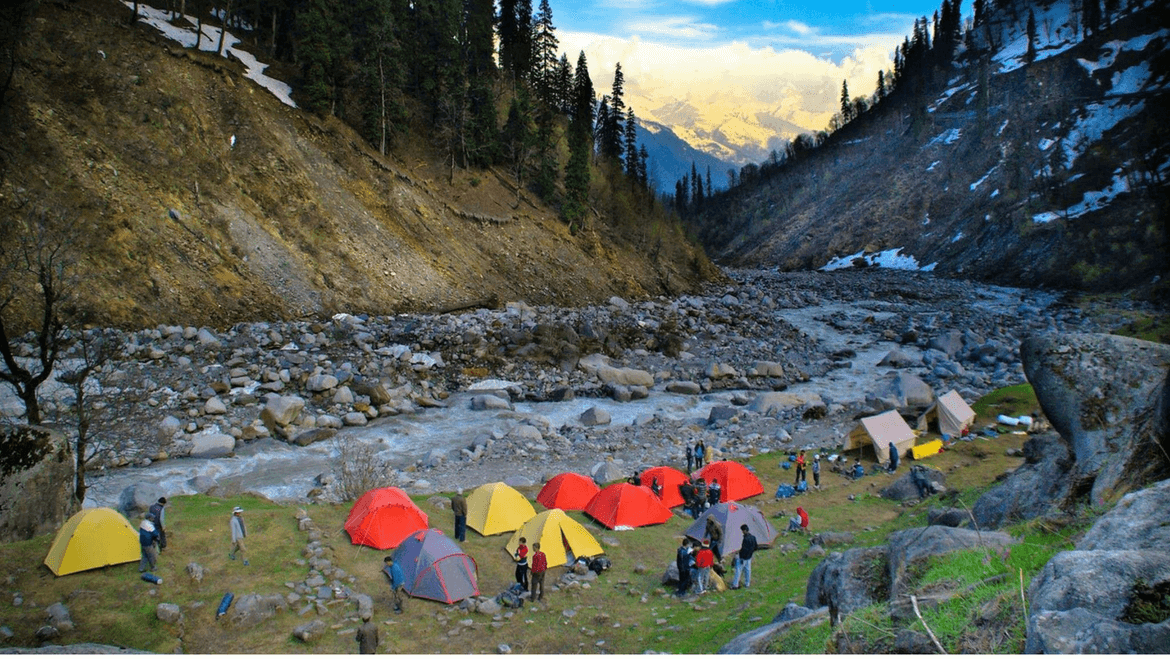If you’re in the mood for a mountain climbing adventure, a Hampta Pass trek may be just what you’re looking for. Located at 12,300 feet, this trek offers spectacular views, as well as total isolation. If you’re ready for a challenge, check out our guide to the Hampta Pass trek. We’ve compiled all the information you need to make the best decision for your needs.
The base camp of the Hampta Pass trek is Jobra. It’s located at approximately 2050 meters above sea level, and a 19 km drive takes you there. En route, you’ll enjoy breathtaking views of the Kullu Valley and Rani Nallah. The Hampta Pass trek can be completed in two or three days, and you’ll have the option to stay in a camp nearby overnight to acclimatize.
The Hampta Pass trek is one of the highest passes in the Himalayas, and a popular trekking route in the area. While it may be difficult for the uninitiated, this trek is guaranteed to leave you breathless and in awe. The pristine landscapes, crowned by massive peaks of over 6000 meters, will have you crying with joy, while the quaint campsites and spectacular views will make you feel like you’re in a fairytale.
This challenging but rewarding trek is one of the best ways to see the best of the Himalayas. This trek offers stunning views of the surrounding mountains, glaciers, and quaint landscapes. It’s possible to extend the trip to nearby lakes and glaciers and even explore the quaint villages of Chandratal lake and Kibber. There’s even luxury camping options to ensure your trip is as comfortable as possible.
Search The Himalayas With This Guide To Hampta Pass Trek
The Hampta Pass trek starts from Jobra, about 30km from Manali. Generally, the trek is most popular during the monsoon and summer season. The region is covered in snow at the beginning of the trek and melts around July. Rain may fall in Manali as well, but the Spiti Valley is relatively unaffected by monsoons.
If you’re new to mountaineering, Hampta Pass is an excellent place to start your journey. With a guide and proper gear, you’ll have the best possible experience and come home with beautiful memories. You’ll also have a chance to explore the different areas of the state, including Lahaul and Kullu. You’ll be rewarded with beautiful views that you won’t forget.
The Hampta Pass Trek is accessible almost six months of the year, but the best time to go is June to October. The weather conditions vary from month to month, but the temperature remains cool throughout. In the months of June, snow is still prevalent in the higher mountains, while in July, the snow starts to melt, giving way to greenery and beautiful views. In late July, the first monsoon starts to fall, and the region sees its first rains of the year.
The Hampta Pass is arguably the most difficult option, but those in good physical condition can attempt it without too much difficulty. The route takes you through beautiful pine forests, glacial valleys, and sweeping paddocks, as well as high mountain lakes. The route includes an extra day of camping at Chandratal Lake. You’ll get to enjoy the stunning views of the mighty Himalayas on this amazing mountain trekking route.
Exploring Some Of The Most Stunning Scenery
If you’re looking for a truly unique and breathtaking mountain experience, the Hampta Pass trek is a great choice. The trail passes through Kullu Valley and the Lahaul valley and ends at the famous Chandratal Lake, with breathtaking views and rare Himalayan birds. You’ll also encounter rare wildlife, including the elusive western Tragopan. You’ll enjoy the sweeping vistas of the Himalayas from above, allowing you to experience a different world.
In addition to exploring some of the most stunning scenery. The Hampta Pass trek is one of the most affordable and convenient ways to get a feel for the Himalayas. The Hampta Pass is a fourteen hundred-foot pass located in Himachal Pradesh in India, and the guide provides essential information for any adventurer. This trek starts at Jobra, a campsite located at the meeting point of valleys. From the lush green valley to the barren desert, you’ll discover a wide range of scenery and diverse landscapes.
Once you’re on the trail, all meals are included. You’ll be out of civilization for most of the trek, so it’s important to take sufficient cash with you. While there are ATMs in Manali, you won’t be able to find one after reaching Jobra. While there is a cellular network in this region, it is not a reliable one. If you can’t leave your phone in the car, a guide to mobile networks in the Spiti Valley can help you make the most informed decision.
